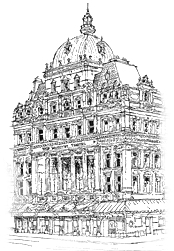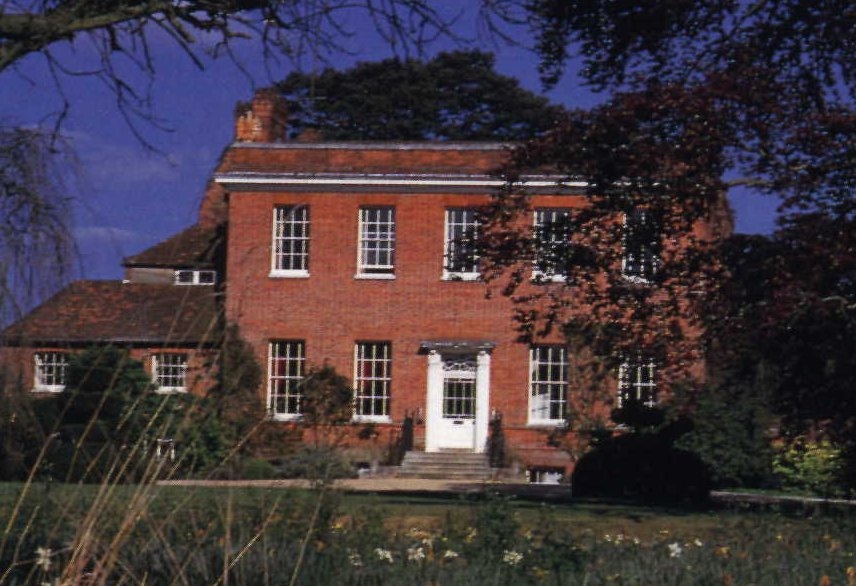
 | The Gallini Family Tree |
| Home | Contact | Statistics | Index |
Yattenon Manor built 1785
 |
Yattendon and its history. The so called Eling Roman Villa is actually in the very north of Yattendon parish. There were numerous small finds, including a bronze dog. Nearby were other buildings, and an vaulted Roman tomb. Yattendon has been known by various names: Etingedene (1086), Gettendon (1195), Jetingedon (1223) & Watindeden (1236). The great Norreys family held Yattendon Castle for many years. The site upon which Yattendon Castle stood was originally occupied by a moated manor house. This house was held by Sir Richard Merbrook by the late fourteenth century. His daughter, Alice, married Sir John Norreys of Ockwells (d.1466), a Knight of the Shire for Berkshire and keeper of the wardrobe for King Henry VI. The castle was then in the ownership of the Norreys family for over 200 years. Sir John bought many neighbouring estates and received a Royal licence to crenellate the manor house in1448 and to empark some 600 acres. John and Alice's son, Sir William Norreys (1433-1507) later inherited the castle. He was among the army King henry VII brought from Brittany in 1485 and was present at the Battle of Bosworth. The castle went to William's eldest son Sir Edward Norreys (d. 1487). Edward Norreys was the father of two sons; Sir John Norreys (1481-1564), who inherited the castle, but died without legitimate issue, and Sir Henry Norreys. Henry VIII and Catherine of Aragon were visitors during the latter years of their marriage and it entirely possible that Maria de la Salins visited Yattendon with her daughter Catherine. What is known is that while there, the Queen’s lady-in-waiting, Anne Boleyn, of whom the King was already enamoured, dropped her handkerchief during a dance. It was retrieved by Sir Henry Norreys thus setting in motion the rumours of his suppossed affair with her, that later led to both he and Queen Anne Boleyn eventually losing their heads for adultery in 1536. Princes Elizabeth stayed at Yattendon on her way to imprisonment at Woodstock. The castle then passed to Edward's grandson, Henry Norris (1525-1601), the son of the above mentioned Sir Henry Norreys. Henry Norris was a life-long friend of Queen Elizabeth and was the father of 6 sons, who included Sir John Norreys, a famous English soldier. By 1721 we find the manor held by James Bertie, who appears to have been the son of Henry Bertie, brother of the first Earl of Abingdon, and his wife Philadelphia, who was a daughter of Sir Edward Norreys. At the death of James Bertie the manor passed to his son Norreys Bertie, who was holding it in 1747 and again in 1759. By his will dated 1766 he left a charge on his estates to his cousin Willoughby fourth Earl of Abingdon, in trust for Lady Elizabeth Gallini, while the manors were left to his cousin Captain the Hon. Peregrine Bertie, the earl's brother. Notwithstanding this will, in 1784 he sold the manor for £2,000 to Sophia Harris, who seems to have been a distant cousin, for Jane, another daughter of Sir Edward Norreys, had married Roger Harris of Winchester, while the mother of Norreys Bertie was Elizabeth daughter of Roger Harris of the same city. Soon after the sale the manor was bought back by the Hon. Peregrine Bertie, who sold it the following year, 1785, to Sir John Andrea Gallini. Giovanni Andrea Gallini, born in Florence on 7 January 1728, arrived in England nearly destitute about 1753 and became a famous dancer at the Haymarket Theatre. As dancing master he visited the house of the Earl of Abingdon and married one of his daughters, Lady Elizabeth Peregrine Bertie, before 13 October 1766. They lived together for some time, but during their later years separated. He danced before the pope, who made him a knight of the Golden Spurs, after which he called himself Sir John. He survived his wife, who died in 1804. At his death in 1805 the manor passed to his son John Andrew Gallini, who was holding the manor in 1806, but was dead before 1825, when one-fifth of the manor belonged to one of his daughters, Mary. The children of Gallini, who appear to have been five in number, of whom two at least were sons, Alfred and Arthur, were still possessed of the manor in 1839. In or about 1841 they sold the estate to T. A. Howard, and as the title seemed insecure owing to Sir John Gallini being an alien, a royal warrant was issued in 1841 to make this good. From T. A. Howard the manor passed to his son Thomas Aubrey Howard, who sold it in 1877 to the late Alfred Waterhouse, R.A., LL.D., at whose death, on 25 August 1905, it passed to his widow. |